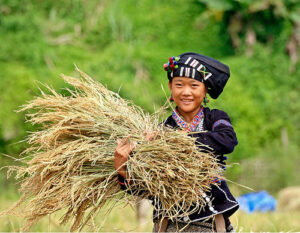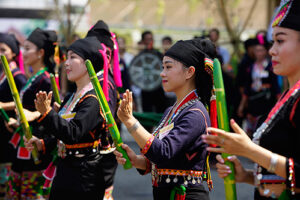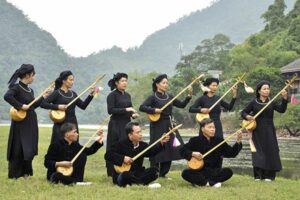The Muong People: Preserving Heritage and Embracing Change
The Muong people are an indigenous ethnic group primarily located in the mountainous regions of Northwest Vietnam, especially in provinces like Hoa Binh, Son La, and Thanh Hoa. They share a close cultural and linguistic relationship with the Kinh (Viet) people but maintain distinct traditions, including a rich heritage of animism, ancestor worship, and shamanistic practices. The Muong are known for their strong ties to nature, communal values, and traditional agricultural practices. Their unique culture and beliefs contribute significantly to the diversity of Vietnam’s ethnic landscape.

Historical Origin
The Muong people are indigenous residents who have lived in our country for a long time and have developed a rich and distinctive ethnic culture.
Other names: Mol, Mual, Mul, or Mon…
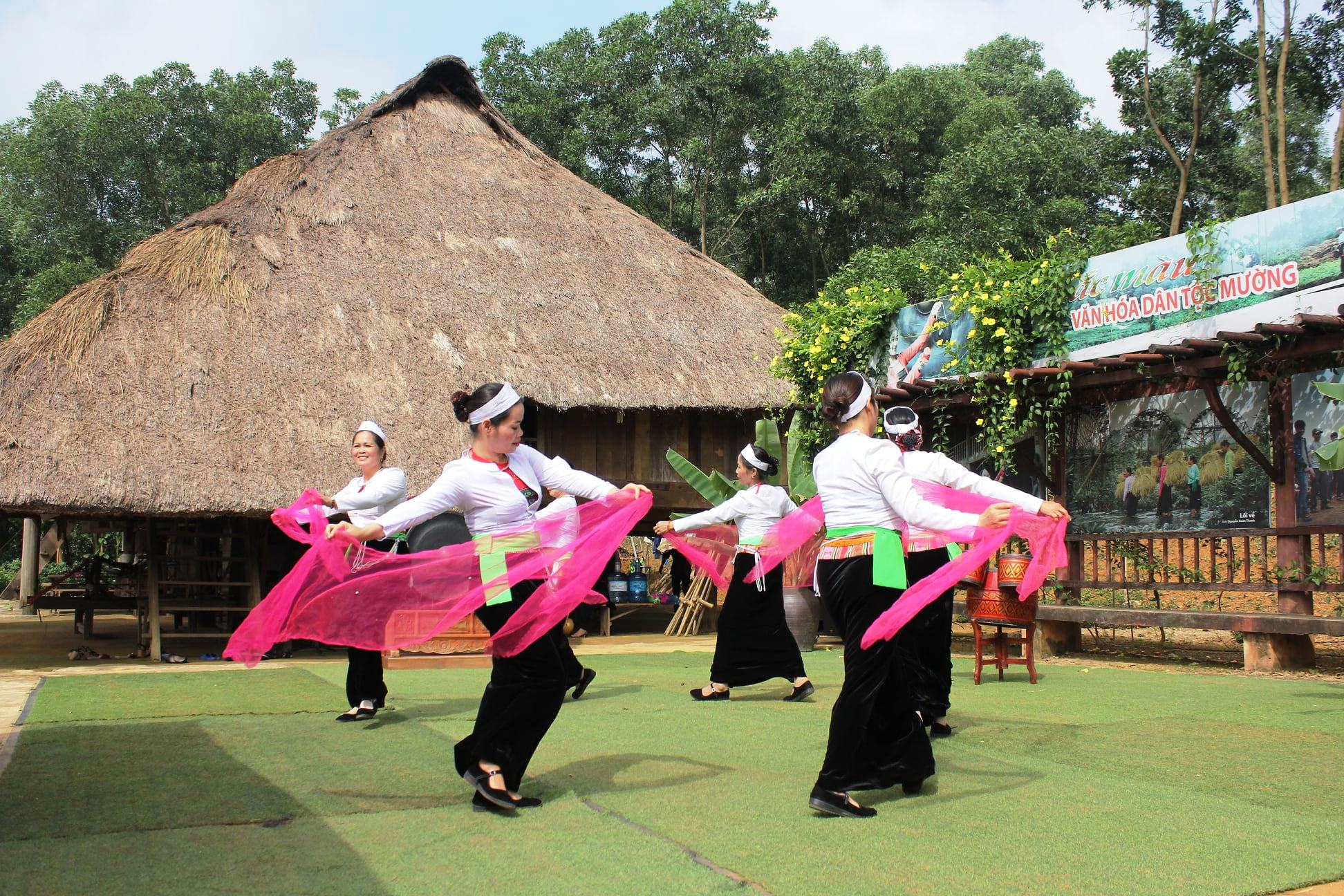
Geographic Distribution
The Muong people in our country reside in a large hilly and mountainous area, in the valleys at the foot of the mountains, with favorable environmental conditions for agriculture. This area lies between the Vietnamese people in the east and the Thai people in the west, stretching about 350 km in length and about 80-90 km in width. They are mainly concentrated in Hoa Bình Province, the districts of Thanh Son, Tan Son, Yen Lap, Thanh Thuy in Phu Tho Province; the districts of Ngoc Lac, Thach Thanh, Cam Thuy, Ba Thuoc, Nhu Xuan, Lang Chanh in Thanh Hoa Province, and scattered across other provinces like Son La, Ninh Binh, Yen Bai, etc.
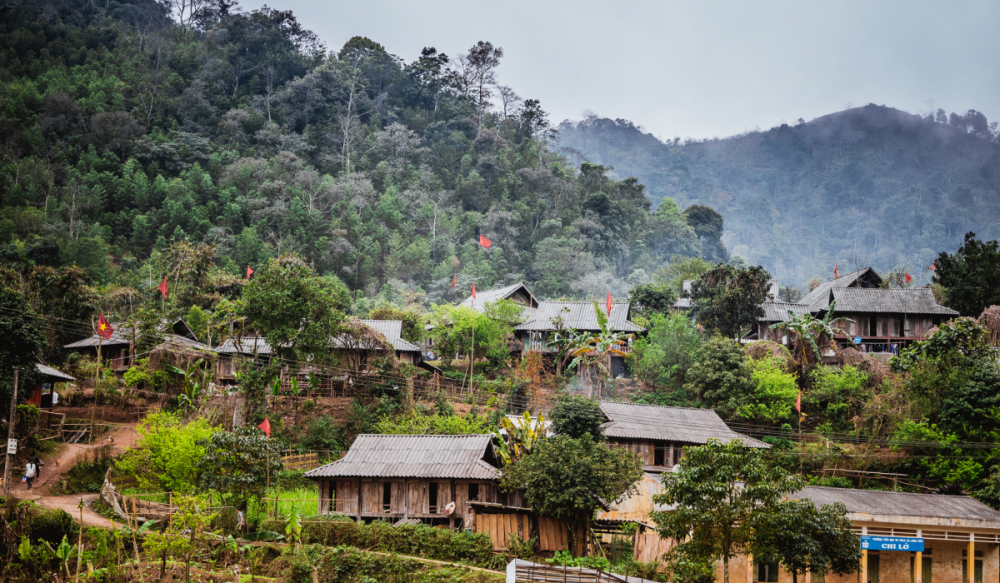
Population and Language
Population: The Muong people are the fourth-largest ethnic group in Vietnam, after the Kinh (Vietnamese), Tay, and Thai.
According to the 2019 survey of 53 ethnic minorities, the Muong population is 1,452,095 people, mainly concentrated in Hoa Binh Province (549,026 people), Thanh Hoa (341,359 people), Phu Tho (218,404 people), Son La (84,676 people), Ha Noi (62,239 people), Ninh Binh (27,6345 people), Yen Bai (17,401 people), etc. The Muong are also present in some southern provinces and cities such as Dak Lak (15,656 people), Binh Duong (9,021 people), Dong Nai (6,257 people), Lam Dong (6,072 people), and others.
Language: The Muong language belongs to the Viet-Muong language group of the Austroasiatic language family.
Key Characteristics
The traditional social structure of the Muong people has many distinctive features. It includes a division into noble families (house lang) and commoners. The social system in traditional Muong society includes hamlets (xom) and villages (muong). These communities have their own management and administration system based on customary law, and all members of the community must strictly follow these rules. The Muong people’s living areas are called “qual” or “xom,” meaning village. A village is the basic unit of Muong society, consisting of several extended families, with the core family being made up of parents and children, with authority generally belonging to the eldest son.
Architecture and Living Space
The culture of the ethnic groups in the Northwestern region of Vietnam is clearly reflected in their architecture, with each ethnic group having its own unique architectural style, creating the distinctive features of each region. The houses here are typically built using natural materials such as wood, bamboo, rattan, or reed, and are mainly stilt houses. These stilt houses not only provide warmth in the winter but also keep cool in the summer, thanks to their smart design and suitability for the highland climate. A common feature of the houses in the Northwestern region is that they are usually built on hill slopes or mountainsides, with the floor elevated from the ground, helping to avoid floods and creating a cool, airy space. The stilt house model has increasingly become an attractive destination for tourists who want to explore the life and unique culture of the people in the Northwestern region.
The architecture and living spaces of the Muong people are deeply intertwined with their cultural identity, reflecting their respect for nature, practicality, and social structures.
The traditional houses of the Muong people are typically stilt houses, with a design adapted to the local environment. The house features four roofs, providing protection against the elements and maximizing airflow to keep the interior cool during hot weather. The upper floor serves as the living space, while the lower floor is used for storing tools, keeping livestock, and other agricultural activities. The architectural design is practical, with the use of local materials such as wood, bamboo, and thatch. This type of architecture reflects the Muong people’s connection to the land, as it is designed to withstand the seasonal floods and make use of the natural resources around them.
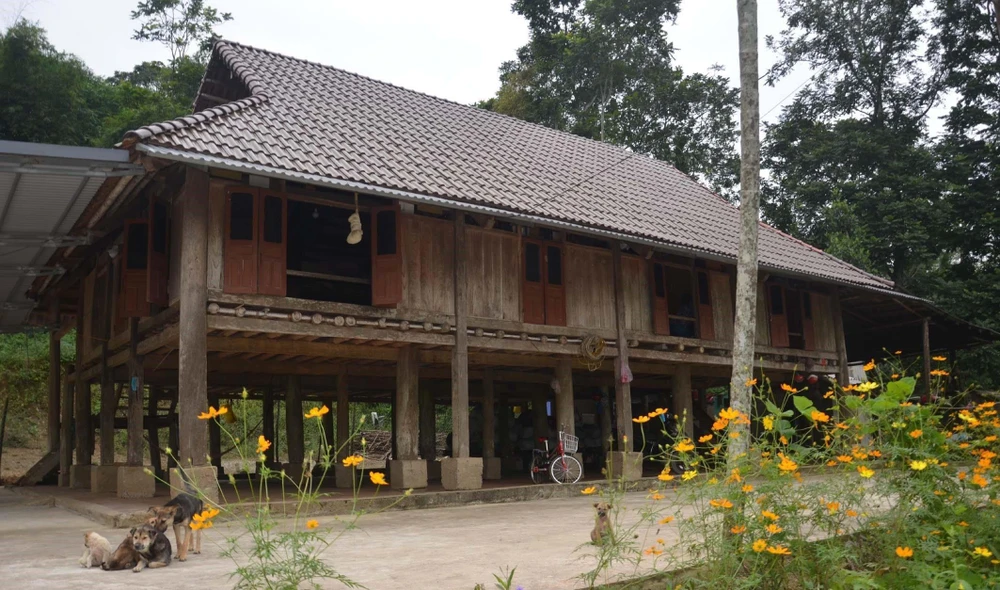
The Muong people live in tight-knit communities within villages or hamlets. The layout of these communities is often centered around a communal area where important social and cultural activities take place. The houses are usually arranged in a way that fosters close relationships among the villagers, with paths connecting each house leading to the village’s central space. This central area may include a communal hall for gatherings, rituals, and celebrations, reflecting the strong sense of community and the importance of collective life in Muong culture. The spaces are organized in a way that ensures social harmony and unity, reinforcing the Muong people’s values of cooperation and mutual support.
These architectural and cultural features are not merely functional but carry deep symbolic meaning, reflecting the Muong people’s respect for nature and their interconnectedness with each other.
Religion and Beliefs
The Muong people practice a form of animism that is deeply rooted in their relationship with nature. They believe in spirits and deities that inhabit natural elements such as mountains, rivers, trees, and rocks. These spirits are thought to have a powerful influence on human life, and people often seek their favor or protection.
Ancestor veneration is an important aspect of Muong religious practice. They believe in the continued existence of their ancestors’ spirits, and these spirits are often invoked in rituals to protect the family or community. There are shrines and altars dedicated to ancestors, and offerings of food, incense, and other items are made to honor them.
Shamanism plays a significant role in Muong spiritual practices. Shamans, or spiritual healers, are believed to possess special abilities to communicate with the spirit world. They act as intermediaries between humans and the spirits, performing rituals to heal the sick, protect the community, and ensure good fortune. Shamans conduct healing rituals that may involve chants, dances, and offerings to appease spirits or to cleanse individuals of bad spirits. These rituals are essential for maintaining balance and harmony within the community.

The Muong people have a belief in life after death, where the soul of the deceased continues its journey in another realm. They believe that the soul must be properly guided and protected in the afterlife, and rituals are performed to ensure a smooth transition. The funeral rituals are elaborate and designed to help the soul of the deceased find peace in the afterlife. These rites involve offerings, sacrifices, and the building of tombs to house the spirit of the deceased.
Over time, especially through contact with neighboring ethnic groups and Vietnamese culture, the Muong people have incorporated aspects of Buddhism and other religious practices into their traditions. This is particularly evident in the larger Muong communities, where Buddhist teachings and practices, such as meditation and reverence for Buddhist deities, have become integrated with indigenous beliefs. In some Muong villages, there are small Buddhist temples, and Muong people participate in festivals such as the Lunar New Year and other Buddhist holidays.
Religious and spiritual beliefs are also expressed through various festivals that celebrate agricultural cycles, the seasons, and the connection between the Muong people and the natural world.

The Muong also hold various superstitions and magical beliefs related to the natural world. For instance, certain natural events or occurrences, such as the birth of an unusual animal or the appearance of certain weather patterns, may be seen as omens or signs from the spirit world.
Given their agricultural lifestyle, the Muong people hold rituals that honor natural forces such as water, earth, and fire. These rituals are meant to ensure good harvests, good weather, and the protection of crops and animals.
Traditional Clothing of the Muong People
The traditional costumes of the ethnic groups in the Northwestern region are exquisitely designed, carrying deep meanings related to beliefs, culture, and history. Each ethnic group has its own unique style of clothing, but in general, they share common characteristics such as: the use of vibrant colors like red, yellow, green, and purple; a focus on decorative details such as embroidery and embellishments with patterns; and the design of the costumes being suited to the climate and daily habits of the people.
The traditional clothing of the Muong people varies between men and women. Women’s costumes are particularly elaborate and distinctive. They typically wear a short blouse (usually white) and a long skirt that reaches the ankles. The skirt consists of two parts: the body of the skirt and the waistband. The waistband is well-known for its intricate, handwoven patterns, often incorporating geometric motifs and floral designs. The headscarf is a rectangular piece of white fabric, unembroidered. Accessories include silver bangles, necklaces, and a unique set of silver belts (with two or four chains), often with charms like peach boxes or claws from tigers or bears.

Men’s traditional attire is simpler, consisting of a short, round-collared shirt with a border, and wide trousers made from coarse white fabric, usually dyed brown or indigo. The waistband is fastened by crossing and tucking in the ends, secured with a scarf. The men’s scarf is traditionally black or dark purple, made from handwoven fabric.
The patterns in the costumes, especially in the waistband and skirt, hold significant cultural value. These patterns are not only an expression of artistic creativity but also represent various cultural beliefs, customs, and even family lineage. The intricate embroidery techniques used in these garments are passed down through generations, showcasing the skill and cultural pride of the Muong people.
The jewelry worn by Muong women is often made of silver, and includes bracelets, necklaces, and earrings. These pieces are typically worn to enhance the beauty of traditional costumes during festivals or important cultural events. The styling of their clothing is equally significant, where the coordination of colors and accessories reflects the wearer’s social status, age, and occasion. The traditional fashion is a blend of utility and cultural significance, designed to be both practical for everyday life and ceremonial for special events.
Marriage
The Muong people’s marriage customs have now adopted modern practices. The phenomena of bride price and dowry are no longer common. Young people can freely fall in love and, if they are happy with each other, they inform their families to prepare for the wedding.
Cuisine
In the past, glutinous rice was the main food in the Muong people’s daily meals, but now, regular rice has gradually replaced it as the main food staple, with glutinous rice used only for holidays and entertaining guests.
The Muong people’s “ruou can” (a type of wine) is famous for its unique fermentation process and rich flavor. It is served to guests and consumed during collective celebrations. Both men and women enjoy smoking tobacco from large pipes. In particular, women have a custom of sharing a single pipe among multiple people.
Education
Previously, only a few Muong people knew how to read the national language or Chinese characters, while the majority were illiterate. Since peace was restored, the movement for education has developed strongly. Most parents have overcome traditional constraints on education and instead encourage their children to attend school, combining family and school education to provide better future opportunities for them.
According to statistics from the General Statistics Office in 2019, the literacy rate for people aged 15 and above is 95.5%; the enrollment rate for primary school is 100.8%; for secondary school, it is 96.3%; for high school, it is 71.5%; and the rate of children not attending school is 6.7%.
Economic Conditions
The main economic activity of the Muong people is rice cultivation. They combine wet rice farming with upland farming, animal husbandry, hunting, foraging, and small-scale handicrafts, with a strong focus on self-sufficiency. Due to their residence in valleys at the foot of mountains, near abundant rivers and streams, the Muong people have developed an advanced irrigation system to supply water for their fields and crops. They are also skilled in handicrafts, particularly weaving and basket-making.
Since the country embarked on the renewal process, moving towards industrialization and modernization, the Muong people’s economy has seen significant changes. According to the 2019 General Statistics Office data: the unemployment rate is 1.18%; the proportion of labor in non-agricultural sectors is 36%; the poverty rate is 14.5%; the near-poverty rate is 14.9%; the rate of households using sanitary water is 89.9%; and the rate of households using electricity for lighting is 99.6%.
